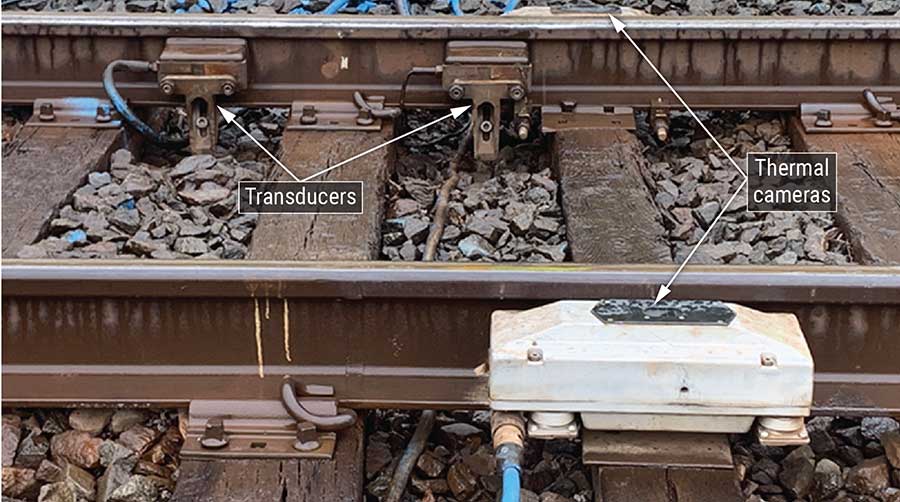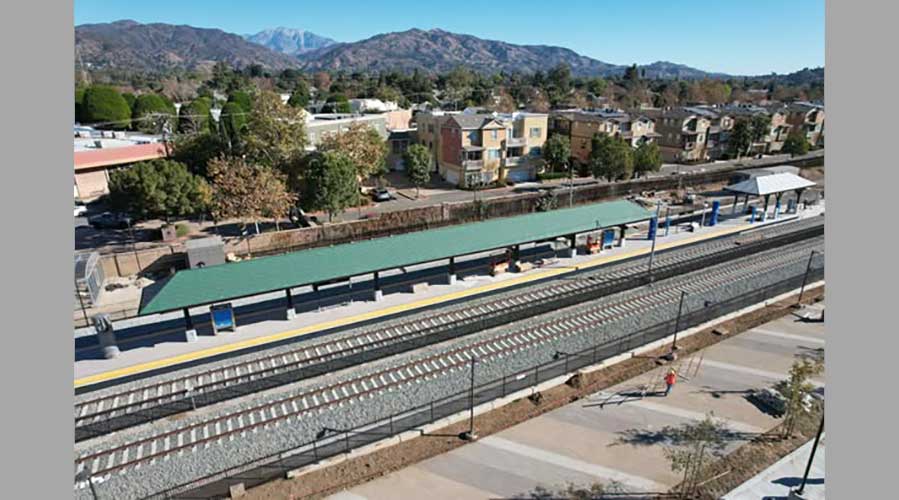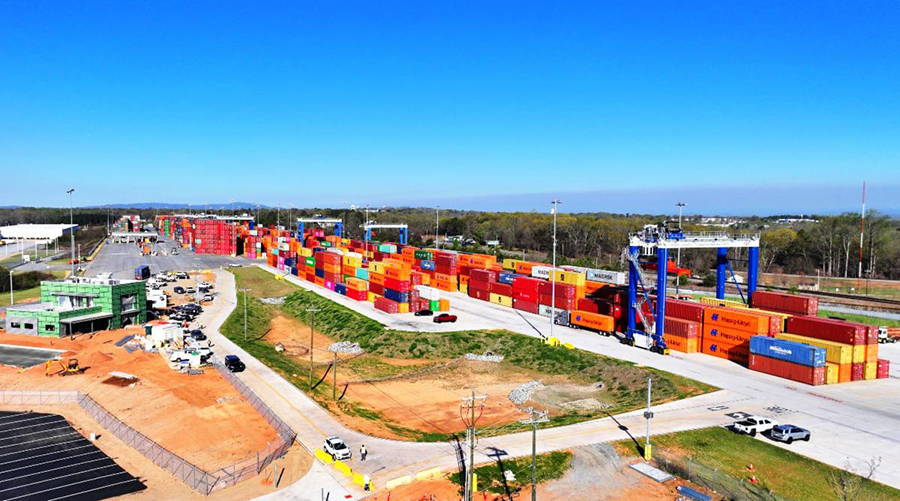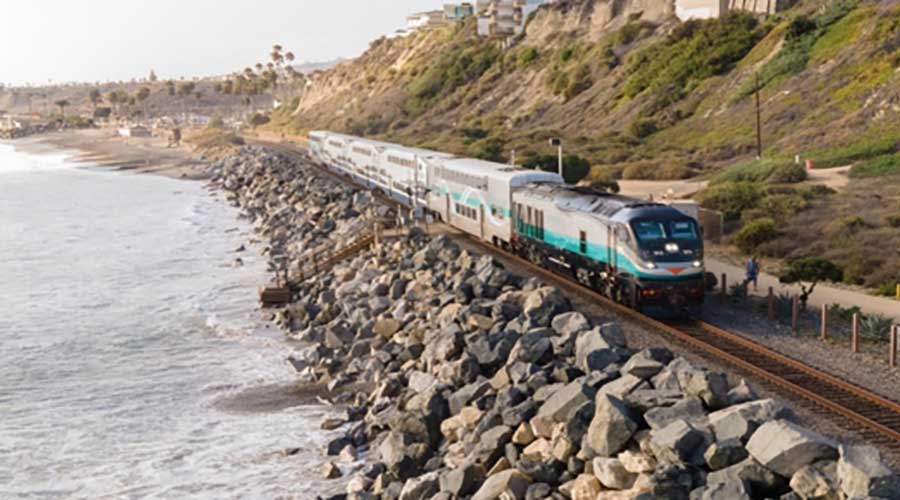Stay updated on news, articles and information for the rail industry
6/2/2023
Rail News: Federal Legislation & Regulation
NTSB focuses on hot-bearing detectors in May 10 NS train derailment

The National Transportation Safety Board yesterday released a preliminary report of its investigation into the May 10 derailment of a Norfolk Southern Railway train in New Castle, Pennsylvania.
Of the nine mixed-freight rail cars that derailed on the Youngstown Line, one included a hazardous material tank car that contained paraffin. The tank car was not breached. There were no reported fatalities or injuries, NTSB officials said in the report.
NS estimated damages to equipment and track at $6.1 million. Visibility conditions were dark and clear at the time of the accident. The train crew consisted of one engineer and one conductor; the train consisted of one head-end locomotive, 144 loaded rail cars, 69 empty cars and two distributed power locomotives positioned mid-train.
The train weighed 19,993 tons, was 12,724 feet long and traveling about 28 mph at the time of the derailment. The maximum authorized speed at that location is 40 mph.
Train movements near the derailment site were authorized by wayside signal indications and coordinated by the NS Youngstown Line train dispatcher in Atlanta, according to the NTSB.
On the Youngstown Line of the Keystone Division, NS has equipped its rail network with wayside hot bearing detectors (HBDs) to measure the temperature of wheel bearings while trains are en route. The HBD detects overheated bearings, provides real time audible alarm messages to train crews and alerts railroad technicians monitoring the advanced train control (ATC) system.
NS has established the following HBD alarm thresholds (above ambient temperature) and criteria for bearings:
• between 170 degrees and 200 degrees Fahrenheit, warm bearing (noncritical); the train must immediately reduce speed to 8 mph or slower until the rear of the train clears the detector, at which point the train must be stopped for inspection;
• a difference between bearings on the same axle greater than or equal to 115 degrees Fahrenheit (noncritical); an alert is sent to the ATC desk; and
• greater than 200 degrees Fahrenheit (critical); the crew receives a critical alarm, and the train must be immediately stopped for inspection.
The train departed Conway Yard about 6:36 p.m. The HBD at milepost 91.9 was the first HBD the train encountered after departing the yard. Preliminary data from HBD data logs indicate that the head end of the train crossed the milepost 91.9 HBD at about 10:13 p.m., when the HBD recorded a temperature 253 degrees above ambient temperature for the east-side bearing on an axle on the 164th rail car.
Radio transmission records show that the HBD transmitted a critical hot wheel bearing alarm message for rail car 164 at 10:17 p.m. and repeated the alarm message at 10:19 p.m. Data logs do not show that the ATC desk received an alert. About 38 minutes later, the nine rail cars derailed, including No. 164.
While on scene, NTSB investigators recovered burned-off bearing components from the 164th rail car; examined and tested railroad equipment; reviewed data from data logs, the lead locomotive’s event recorder and forward-facing and inward-facing image recorders; and completed interviews.
During review of signal data logs, NTSB investigators found that signal maintainers had performed maintenance on the Youngstown Line between Conway Yard and New Castle on May 8.
Maintenance activity included detaching and re-attaching track-mounted components of the HBD at milepost 91.9 Post-accident on-scene testing showed that the HBD’s transducers were attached incorrectly and reporting reversed train travel directions. NS’s ATC system requires an accurate report of train travel direction to interpret HBD data.
Under NTSB investigators’ direction, signal maintainers corrected the transducers’ positions. In subsequent tests, NS technicians at the ATC desk in Atlanta confirmed that they had received usable HBD data.
Post-accident examinations did not identify conditions that would have prevented the HBD from transmitting an alarm message. However, NTSB investigators reviewed the inward-facing image recorder and audio data from the head-end locomotive of train 14M and did not find evidence of an audible alarm being broadcast over the locomotive radio.
When NTSB investigators examined the locomotive’s ultra-high frequency radio communication system, preliminary results showed the locomotive’s radio was functional. However, investigators found a loose coaxial connection between the antenna and the radio. On May 16, NS sent the radio to its radio shop in Roanoke, Virginia, for further analysis.
The NTSB’s investigation is ongoing.
Contact Progressive Railroading editorial staff.


 LRW Honors Amtrak’s Acheson As Railway Woman Of The Year
LRW Honors Amtrak’s Acheson As Railway Woman Of The Year
 From Editor-In-Chief Foran: Of Gender Equity And Inclusion
From Editor-In-Chief Foran: Of Gender Equity And Inclusion
 Spotlight On Some Of Today’s Rail Safety Products
Spotlight On Some Of Today’s Rail Safety Products
 Women of Influence in Rail eBook
Women of Influence in Rail eBook
 railPrime
railPrime







